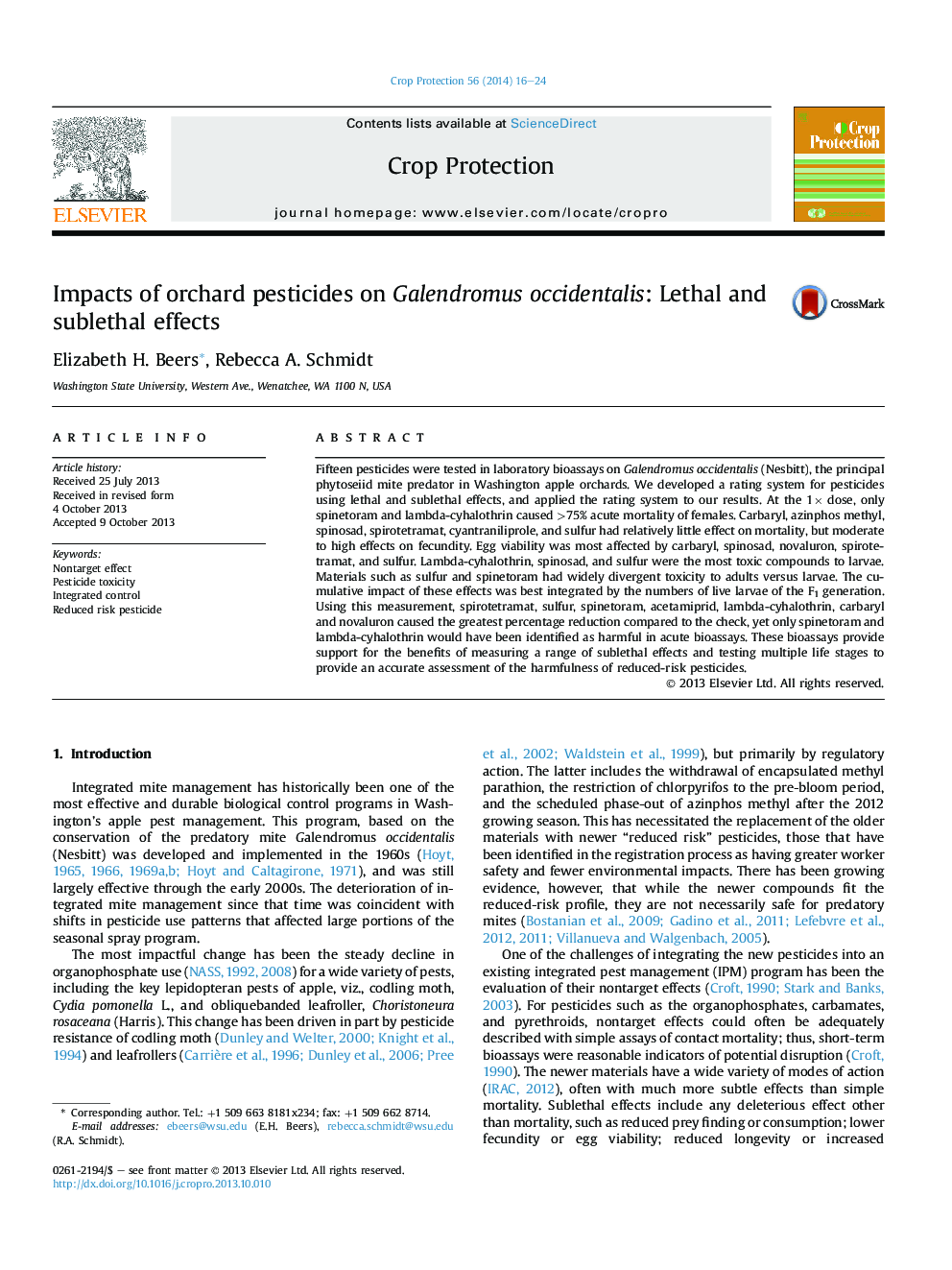| Article ID | Journal | Published Year | Pages | File Type |
|---|---|---|---|---|
| 6373759 | Crop Protection | 2014 | 9 Pages |
Abstract
Fifteen pesticides were tested in laboratory bioassays on Galendromus occidentalis (Nesbitt), the principal phytoseiid mite predator in Washington apple orchards. We developed a rating system for pesticides using lethal and sublethal effects, and applied the rating system to our results. At the 1Ã dose, only spinetoram and lambda-cyhalothrin caused >75% acute mortality of females. Carbaryl, azinphos methyl, spinosad, spirotetramat, cyantraniliprole, and sulfur had relatively little effect on mortality, but moderate to high effects on fecundity. Egg viability was most affected by carbaryl, spinosad, novaluron, spirotetramat, and sulfur. Lambda-cyhalothrin, spinosad, and sulfur were the most toxic compounds to larvae. Materials such as sulfur and spinetoram had widely divergent toxicity to adults versus larvae. The cumulative impact of these effects was best integrated by the numbers of live larvae of the F1 generation. Using this measurement, spirotetramat, sulfur, spinetoram, acetamiprid, lambda-cyhalothrin, carbaryl and novaluron caused the greatest percentage reduction compared to the check, yet only spinetoram and lambda-cyhalothrin would have been identified as harmful in acute bioassays. These bioassays provide support for the benefits of measuring a range of sublethal effects and testing multiple life stages to provide an accurate assessment of the harmfulness of reduced-risk pesticides.
Related Topics
Life Sciences
Agricultural and Biological Sciences
Agronomy and Crop Science
Authors
Elizabeth H. Beers, Rebecca A. Schmidt,
